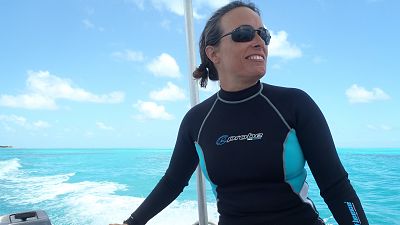We are the face of marine research at the University of Sydney, with over 150 years of marine science teaching and research in the fields of biology, ecology, geosciences, climate change technology, green engineering, ocean observation, marine geology and international law and policy.
Australia has a vast marine jurisdiction with unique ocean and coastal ecosystems, many of which are poorly understood.
The accelerating changes in the climate, combined with land use practices, marine litter, fishing, shoreline industries and new risks, such as increasing ocean noise and potential deep-sea mining are presenting Australia and the global community with unprecedented challenges.
We are working to understand these challenges and expand the scientific, technical and legal know how to solve problems like biodiversity loss and food insecurity through a combination of cutting-edge research, education and leadership training.
Manual Description :
Manual Address :
Manual Addition Info Content :
Manual Type : profile

_self
Auto Type : contact
Auto Addition Content :
Auto Name : true
Auto Position : true
Auto Phone Number : false
Auto Mobile Number : true
Auto Email Address : true
Auto Address : false
UUID : E-BRUCE
Manual Description :
Manual Address :
Manual Addition Info Content :
Manual Type : profile

_self
Auto Type : contact
Auto Addition Content :
Auto Name : true
Auto Position : false
Auto Phone Number : false
Auto Mobile Number : false
Auto Email Address : false
Auto Address : false
UUID : A-VILACONCEJO
Our marine science research themes
Sandy beaches in estuaries and bays (BEBs) protect many coastal properties and infrastructures of coastal communities around the world.
The nature of estuarine beaches and their critical functions vary with distance from the mouth of the estuary, which is the source of wave and tidal energy, and often the dominant source of sand. Little research has been done in this field.
We're investigating BEBs morphodynamics, evolution, and response to climate change as part of an expanding international consortium studying BEBs in Australia, New Zealand, Brazil, USA and Spain.
We have multiple projects in different BEBs and are undertaking:
Coral reefs around the world are irreversibly transforming due to unprecedented rapid environmental change. Recent mass bleaching events have shown the impact of climate change driven marine heatwaves for coral reef health and the demise of reef structure. Because returning coral reefs to their past healthy state is no longer an option, there is a pressing need to understand, quantify and model the impact of new environmental conditions on coral reefs. Coral reefs (and reef islands) are not inert features that will simply get destroyed or flooded with climate change.
There are key knowledge gaps in quantifying carbonate sediment budgets and productivity, wave dissipation and sediment transport, and reef and island resilience. This needs to be addressed using multidisciplinary approach using field data, remote sensing and numerical modelling.
We aim to understand coral reef morphodynamics, wave dissipation and sediment transport by examining:
Research into the history of the Great Barrier Reef at the University of Sydney research station at One Tree Island is helping us understand how it will cope with anthropogenic climate change.